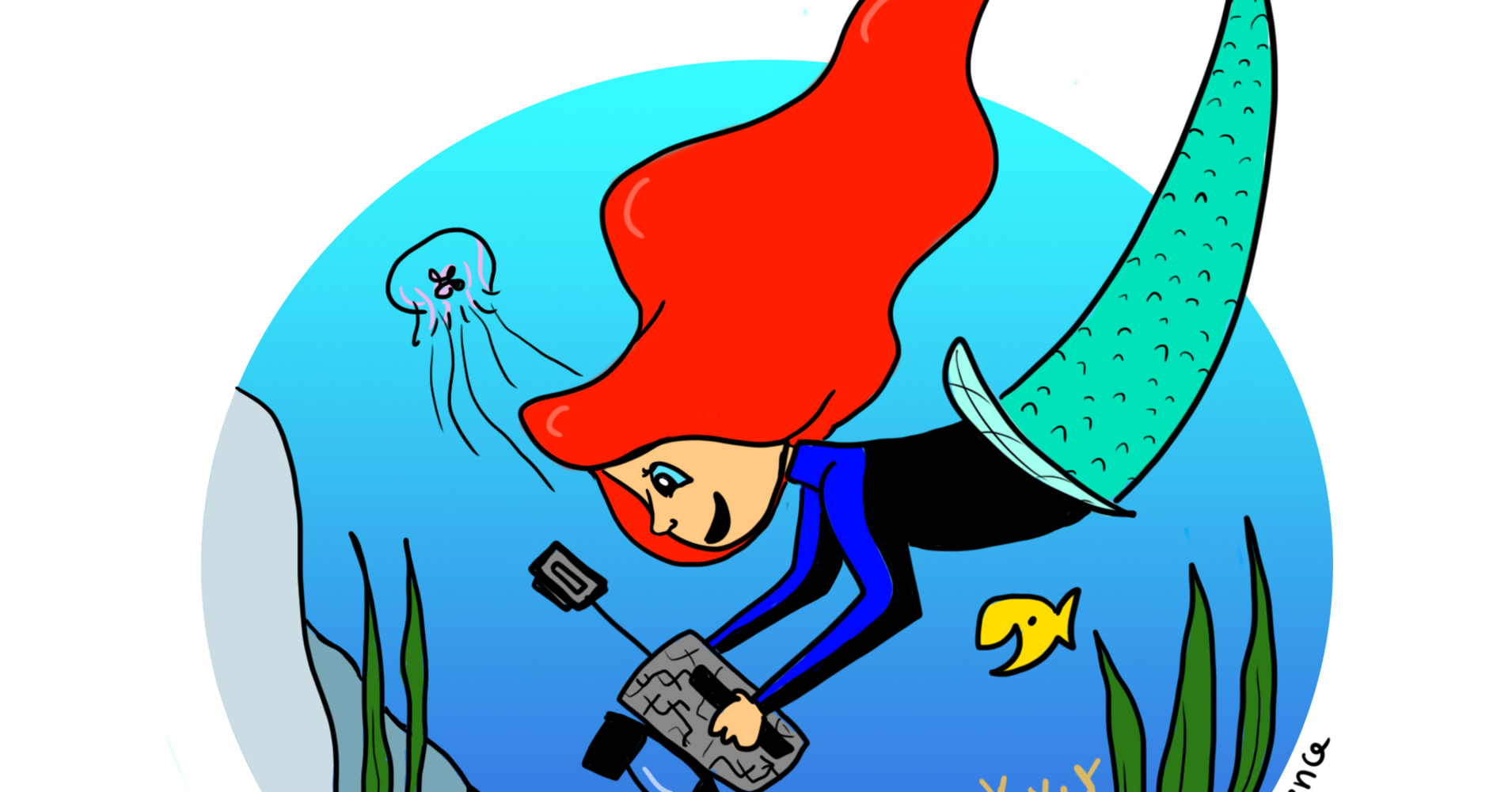[ad_1]
Baby boomers grew up on Cinderella, Snow White and Sleeping Beauty. These Disney movie favorites always face peril, but they get their man in the end — after being rescued by him, of course. Millennials grew up on Disney princesses who were made of stronger stuff. They are warriors and adventurers, and — while happy to have a man in their lives — they don’t need a handsome prince to save them.
It struck artist JoAnna Wendel and writer Mohi Kumar that these women were connected to nature and would make great scientists. So why not transform them? Elsa became a glaciologist. Jasmine became an atmospheric chemist. Fa Mulan became a paleontologist. Merida became a conservation ecologist and park ranger. And Ariel, our favorite little mermaid, became ― what else? ― an oceanographer.
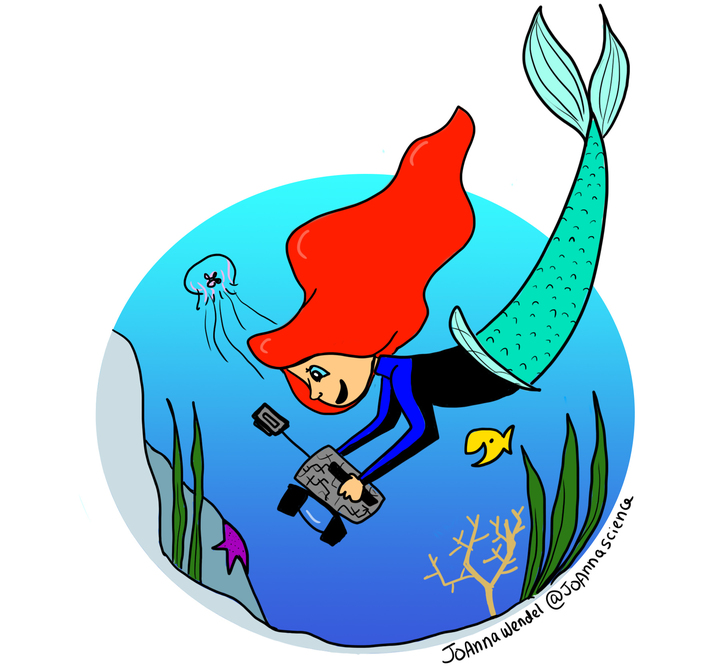
JoAnna Wendell
“They’re already going to extreme environments, or they have special powers that allow them to get places that non-magical people would not be able to access,” Wendel said. “Obviously, instead of wooing a man, the princesses should be using their powers for science.”
Wendel is the lead communications specialist in the planetary science division at NASA and an occasional cartoonist. Kumar is the interim senior news editor at AGU.
Their efforts produced a collaboration, released by the American Geophysical Union, reimagining many well-known Disney princesses as scientists who make important discoveries in the natural world. AGU described the effort as “an alternate universe where happily ever after includes a dedication to the scientific method.”

JoAnna Wendell
“Girls look to Disney princesses as role models,” Kumar said. “When I was younger, all the Disney princesses cared about was love and marriage. The drawings seek to break that, to show princesses as having aspirations beyond their storylines, beyond finding a man. What’s not to love about that?”
Kumar has two children, a boy, 6, and a girl, 2, and an investment in raising them free of gender stereotypes. “My little girl loves princesses and pretty dresses, but she also loves climbing all over things, being a daredevil, getting messy,” she said. “I can see that she already has an engineer’s brain. She wants to figure out how things work. In her world, she can dress up as a princess and do all this messy, daring, stuff.”
Last Christmas, “she got a tutu, a crown and a NASA onesie,” Kumar added. “She put them all on at once. The next thing I know, she had gotten out her hammer and peg board, and was banging away at it. I watched as she found an engineering solution to driving those pegs into the board: standing on them! And I thought to myself, ‘Yes! She’s a princess and an engineer.’”
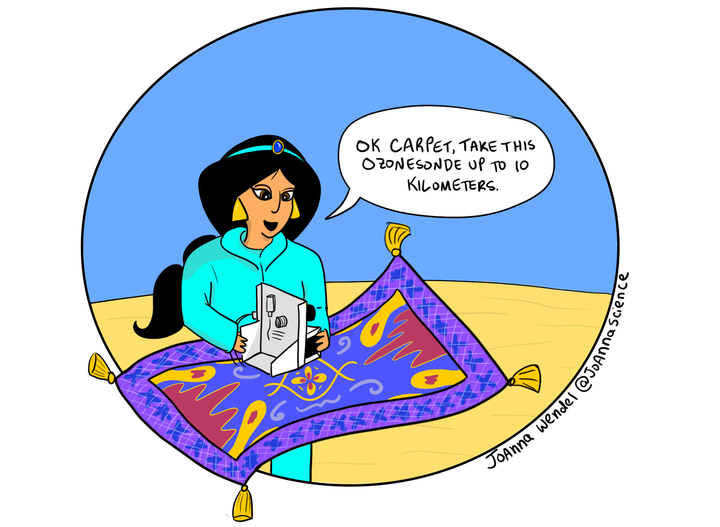
JoAnna Wendell
Kumar pointed to a recent National Academies of Sciences, Engineering and Medicine report showing that more than half the women who are faculty and staff at U.S colleges and universities have endured harassment based on their gender.“That statistic is tragic,” she said. “Culture needs to change. Imagining princesses as scientists is a great way to start a conversation about changing that culture. Here are princesses, the girliest of the girlies, doing something beyond looking dainty and waiting for true love. Here are princesses trying to change the world through knowledge.”
Turning these characters into scientists also teaches young girls that there’s nothing wrong with failing, especially since the scientific process often is about failure ― at least at first. “Science teaches us that it’s OK ― that it’s part of the journey, even ― to fail and fail and fail a lot,” Wendel said. “There’s not much room for failure in a 90-minute kid’s movie, but I think there’s enough of a message of perseverance in the Disney stories that it translates well to science.”
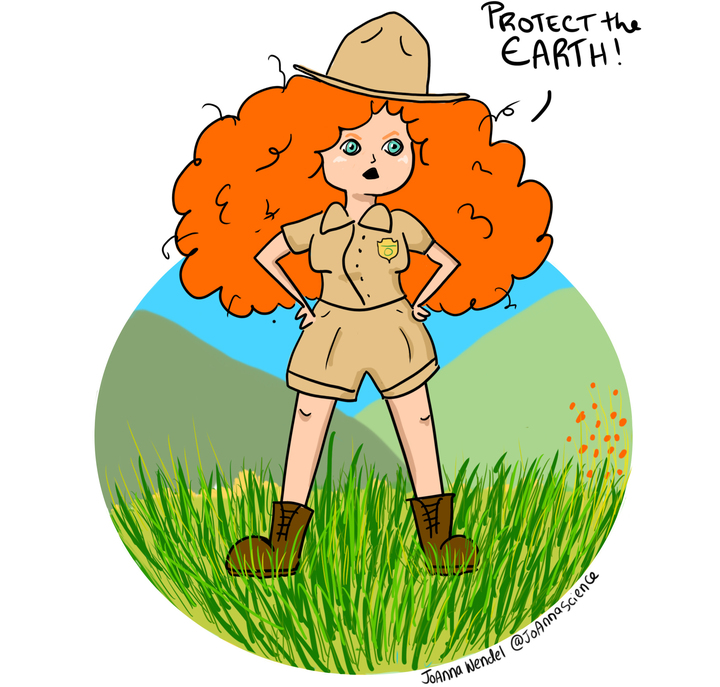
JoAnna Wendell
Wendel, 27, believes that Disney probably destroyed her own expectations for love. She’s gotten over it, but the message is one she’d like to see in purgatory with the Disney’s collection of wicked witches. “Why do all women in Disney stories have to be princesses who end up with a man?” she said. “This is why I love Merida. She said ‘hell no’ to the marriage stuff. Her story was more about acceptance and family. Women, especially in the older Disney movies, are all sexily-clad and naive and can’t do anything for themselves. So, if that’s all little girls are seeing, how are they supposed to strive for anything more?”
Kumar agreed. “In my blurb about Merida, I imagined how she’d react to the question, ‘What about your home life and marriage?’ Ever notice how profiles of women scientists — or really, any noteworthy women — mention them being mothers, while men don’t get the same treatment?” she said. “Well, Merida’s not buying it, and neither should we.”
Wendel intentionally dressed her new princesses in practical clothing, “because there’s a huge problem in TV and movies where women are doing all these crazy stunts in heels and tight skirts and bared midriffs,” she said. “It’s so silly. There’s this idea that women can’t be feminine without a certain type of clothing, but women can be feminine and covered head-to-toe, wearing a big coat against the cold.”
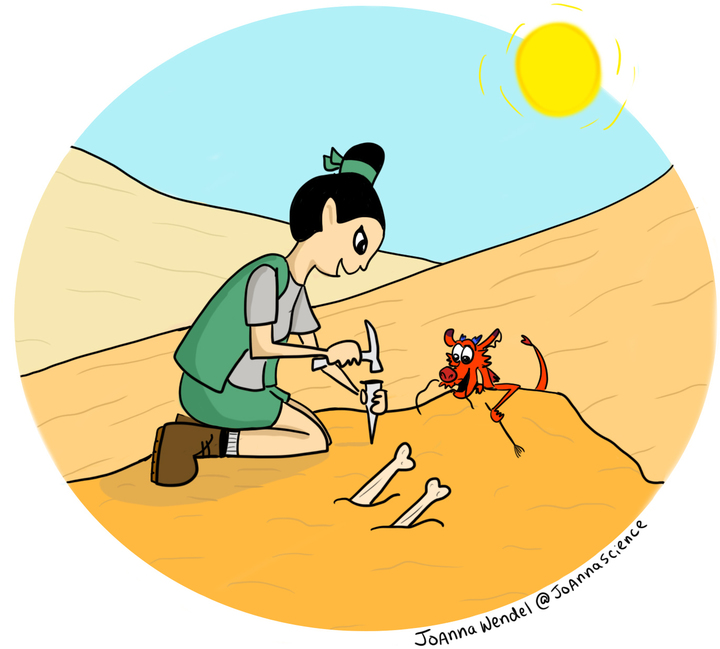
JoAnna Wendell
While their princess scientists already have a link to nature — Ariel already lives underwater, and Elsa has icy powers, for example — Wendel thinks Snow White, Sleeping Beauty and Cinderella might be more difficult to transform. She says she could see Belle as a mathematician or science historian, while Kumar thinks Snow White could become a gemologist.
“I know that JoAnna’s reimagined princesses are busting stereotypes and breaking into male-dominated science fields, but my daughter doesn’t yet know that such misogynistic stereotypes exist,” Kumar said. “Pictures like these, I hope, create a space where she’ll never need to know those stereotypes. And that’s a step to those stereotypes dissolving for good.”
Wendel agreed. “I love the variety of ways people have imagined Disney princesses, because they’re mostly blank slates to project your dreams on,” she said. “And I think the more girls see kick-ass women doing science, the more they too can think of themselves as potential scientists.”
Marlene Cimons writes for Nexus Media, a syndicated newswire covering climate, energy, policy, art and culture.
[ad_2]
Source link

